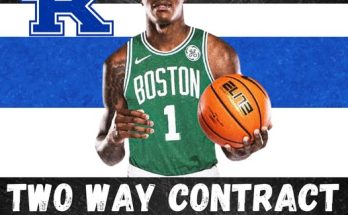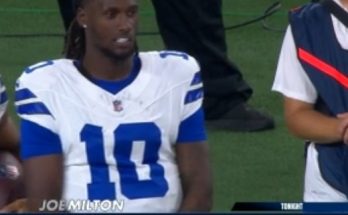The NRL has always been a league that inspires passion, but recent weeks have seen a surge in fan frustration that has extended far beyond any single team or player. While the Melbourne Storm captain has often been at the center of public scrutiny due to his high-profile performances and leadership role, the current wave of criticism has reached multiple players across the league. What was once an isolated focus on individual controversies has now evolved into a broader, league-wide debate, reflecting the intensity with which fans follow every play, decision, and headline.
At the heart of this growing tension is a combination of on-field performance, off-field behavior, and social media amplification. Fans today are no longer passive observers; they are active participants in the narrative surrounding their favorite teams and the players they admire—or despise. Social media platforms like Twitter, Instagram, and TikTok provide instant access to players’ lives, and with that access comes heightened scrutiny. A single missed tackle, a contentious refereeing decision, or an offhand comment in an interview can ignite a storm of criticism. For the Melbourne Storm captain, who has long been in the public eye, this is nothing new. However, what sets the current climate apart is that fans’ ire is no longer limited to one high-profile figure—it is spreading across rosters, affecting multiple players and even entire clubs.
One factor contributing to the rising anger is performance inconsistency. Many teams are struggling to find a balance between experience and youth, and fans have been quick to voice their frustrations when results do not meet expectations. The Storm, known for their disciplined and tactical approach, have had moments of vulnerability that opponents have capitalized on. These losses are magnified when a team that has historically dominated fails to meet the high standards set by its own legacy. Fans who have invested emotionally, financially, and socially in supporting their teams feel a deep sense of disappointment when their heroes falter, and social media allows that disappointment to be broadcast instantly and widely.
Yet the Storm captain is far from the only target. Across the NRL, players from multiple clubs are experiencing similar scrutiny. High-profile stars from teams like the Brisbane Broncos, Sydney Roosters, and South Sydney Rabbitohs have all faced criticism, whether for underwhelming performances, perceived lapses in effort, or incidents off the field. The scrutiny is not limited to established veterans; rising young talents are also feeling the pressure of immediate public judgment. In an era where every movement on the field can be recorded, analyzed, and debated in real time, the margin for error is razor-thin. Players who once could grow into their roles without fan interference now face intense analysis from the moment they step onto the professional stage.
Off-field behavior further intensifies the tension. In today’s media landscape, athletes are public figures whose actions are constantly visible and subject to interpretation. From social media posts to public appearances, fans expect players to represent their clubs with integrity, professionalism, and respect. Missteps are often amplified, sometimes unfairly, as narratives can quickly spiral out of proportion. For example, a lighthearted comment made during an interview can be construed as disrespectful, or a personal choice outside of football can be portrayed as a lack of commitment. When these incidents occur, the public response can be swift and unforgiving, adding to the stress experienced by players and shaping perceptions long before a team takes the field.
The league itself is not immune from criticism. Fans frequently point to refereeing decisions, scheduling controversies, and governance issues as sources of frustration. When contentious calls are made during high-stakes matches, the blame often spills over onto players, regardless of their direct involvement. The Melbourne Storm captain, with his leadership responsibilities and visibility, naturally becomes a focal point for this dissatisfaction. However, as fans increasingly direct their attention to broader patterns of perceived injustice or underperformance, other players inevitably become collateral in a larger discussion about the state of the NRL.
Social media culture plays a particularly pivotal role in amplifying these tensions. Platforms designed for quick reactions and viral content encourage immediate responses, often fueled by emotion rather than rational analysis. Hashtags trend, memes circulate, and fan accounts dissect every angle of a player’s performance or personality. While this can foster a sense of community and engagement among supporters, it also creates a relentless feedback loop of criticism. Players who might otherwise recover from a poor performance or minor misstep now face sustained commentary, with each new post adding layers to the narrative of blame and frustration.
Interestingly, this widespread scrutiny also reflects the deep emotional investment fans have in the league. Unlike casual spectators of other sports, many NRL supporters see themselves as part of a collective experience, where victories and defeats resonate far beyond the stadium. When players fail to meet expectations, it is interpreted not just as a personal shortcoming but as a communal letdown. The intensity of this emotional engagement is part of what makes the NRL compelling, but it also means that any perceived lapse—whether tactical, technical, or personal—can spark disproportionate reactions from a passionate fanbase.
The media ecosystem surrounding the NRL further compounds this phenomenon. Sports journalists, commentators, and content creators continuously provide analysis, often framing narratives around conflict, controversy, and standout performances. Stories that highlight disagreements between players, questionable decisions, or off-field drama tend to attract more attention, reinforcing the cycle of scrutiny. For the Melbourne Storm captain and other targeted players, this means that public perception can be shaped as much by media framing as by actual performance, creating additional pressure to respond both on and off the field.
Clubs themselves are attempting to navigate this increasingly complex landscape. Coaches, management, and support staff are aware that players’ mental health and public image are intertwined with performance and fan engagement. Programs focusing on media training, social media management, and psychological support have become essential components of professional sport, recognizing that the intensity of public scrutiny can affect decision-making, confidence, and team dynamics. Yet despite these measures, the reality remains that once a story or controversy gains traction online, controlling the narrative is exceedingly difficult.
The current climate also raises important questions about the relationship between athletes and fans. On one hand, passionate engagement drives ticket sales, merchandise revenue, and overall interest in the sport. On the other hand, excessive criticism can create toxic environments that harm both players and the broader league culture. Striking a balance between fan involvement and player well-being is an ongoing challenge, and incidents like the recent targeting of the Melbourne Storm captain demonstrate how quickly emotions can escalate beyond healthy rivalry.
In conclusion, the wave of criticism directed at the Melbourne Storm captain is emblematic of a larger trend within the NRL, where fans’ expectations, social media dynamics, and media narratives converge to create heightened scrutiny for players across the league. While leadership roles naturally attract attention, the expansion of anger to multiple players indicates that frustration is increasingly directed at systemic issues rather than individual failings alone. Performance inconsistencies, off-field behavior, refereeing controversies, and the unrelenting influence of social media all contribute to a climate where players must navigate both athletic and public pressures simultaneously.
As the league moves forward, the challenge for players, clubs, and fans alike will be managing this intensity in a way that preserves the passion and engagement that make the NRL compelling, while also fostering a culture that supports the mental, emotional, and professional well-being of the athletes who bring the sport to life. For the Melbourne Storm captain, other targeted stars, and emerging players alike, the ability to thrive under scrutiny will be as important as their skills on the field, underscoring the evolving nature of professional sport in the digital age.
The NRL remains a league defined by competition, loyalty, and fervent fan support, and these dynamics are unlikely to change anytime soon. Fans will continue to hold players accountable, media narratives will continue to shape public opinion, and athletes will continue to navigate the pressures of expectation. In this environment, the recent crosshairs aimed at the Melbourne Storm captain may serve as a warning to all players: in today’s NRL, no one is immune from scrutiny, and every action—on and off the field—has the potential to ignite public debate.
Ultimately, the story is bigger than any one player. It is about a league, its fans, and the evolving relationship between performance, perception, and passion. While anger may flare and criticism may intensify, it also reflects the deep connection that supporters feel to their teams and the emotional stakes that make the NRL more than just a sport—it is a cultural phenomenon that commands attention, loyalty, and, at times, heated debate.



